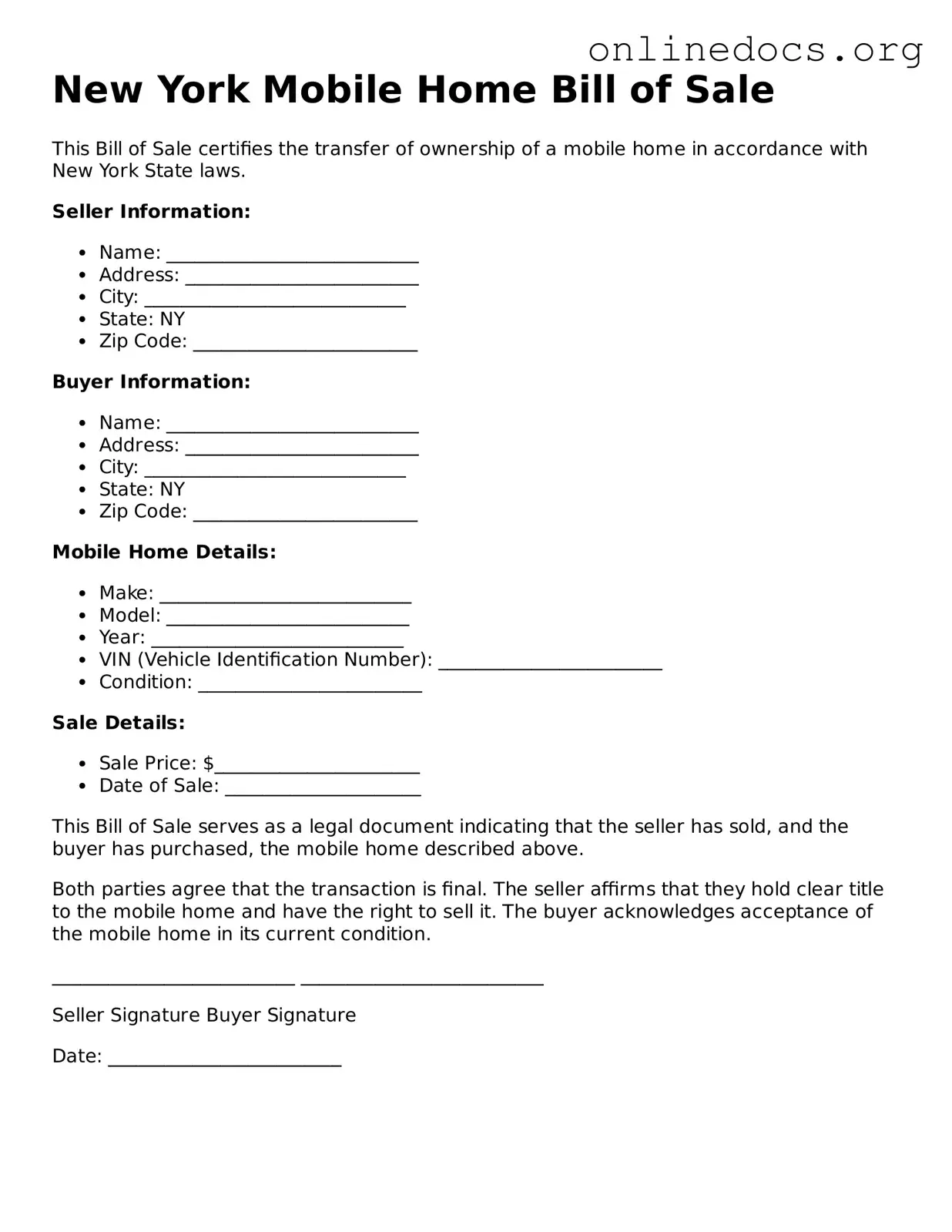The New York Vehicle Bill of Sale serves a similar purpose as the Mobile Home Bill of Sale. Both documents are used to transfer ownership of a property. In the case of the Vehicle Bill of Sale, it pertains to motor vehicles, while the Mobile Home Bill of Sale specifically addresses mobile homes. Each document requires the seller's and buyer's information, details about the property being sold, and the sale price. This ensures that both parties have a clear understanding of the transaction and protects them in case of future disputes.
For individuals looking to designate someone to handle their affairs, a reliable resource is the effective Power of Attorney document guide. This form is critical in ensuring that the right person is empowered to make decisions when necessary.
The Real Estate Purchase Agreement is another document that shares similarities with the Mobile Home Bill of Sale. This agreement is used for the sale of traditional real estate properties. Like the Mobile Home Bill of Sale, it outlines the terms of the sale, including the purchase price and the identities of the buyer and seller. Both documents serve to formalize the transfer of ownership and include essential details to safeguard the interests of both parties involved in the transaction.
The Boat Bill of Sale is comparable to the Mobile Home Bill of Sale in that it facilitates the transfer of ownership of a specific type of property—boats. This document includes information about the buyer and seller, as well as details about the boat itself, such as its make, model, and hull identification number. Just as with mobile homes, having a Boat Bill of Sale helps to provide legal proof of ownership and can be crucial for registration purposes.
The Equipment Bill of Sale is another document that parallels the Mobile Home Bill of Sale. This form is used when selling or buying equipment, such as machinery or tools. It includes similar elements, such as the names of the buyer and seller, a description of the equipment, and the sale price. Both documents ensure that the transaction is clearly documented, which can help prevent misunderstandings and disputes later on.
Lastly, the Personal Property Bill of Sale is akin to the Mobile Home Bill of Sale as it covers a wide range of personal property transactions. This document can be used for various items, including furniture, electronics, and collectibles. Like the Mobile Home Bill of Sale, it includes the buyer's and seller's information, a description of the item, and the purchase price. Both documents serve to provide legal proof of ownership and detail the terms of the sale, ensuring that both parties are protected in the transaction.
